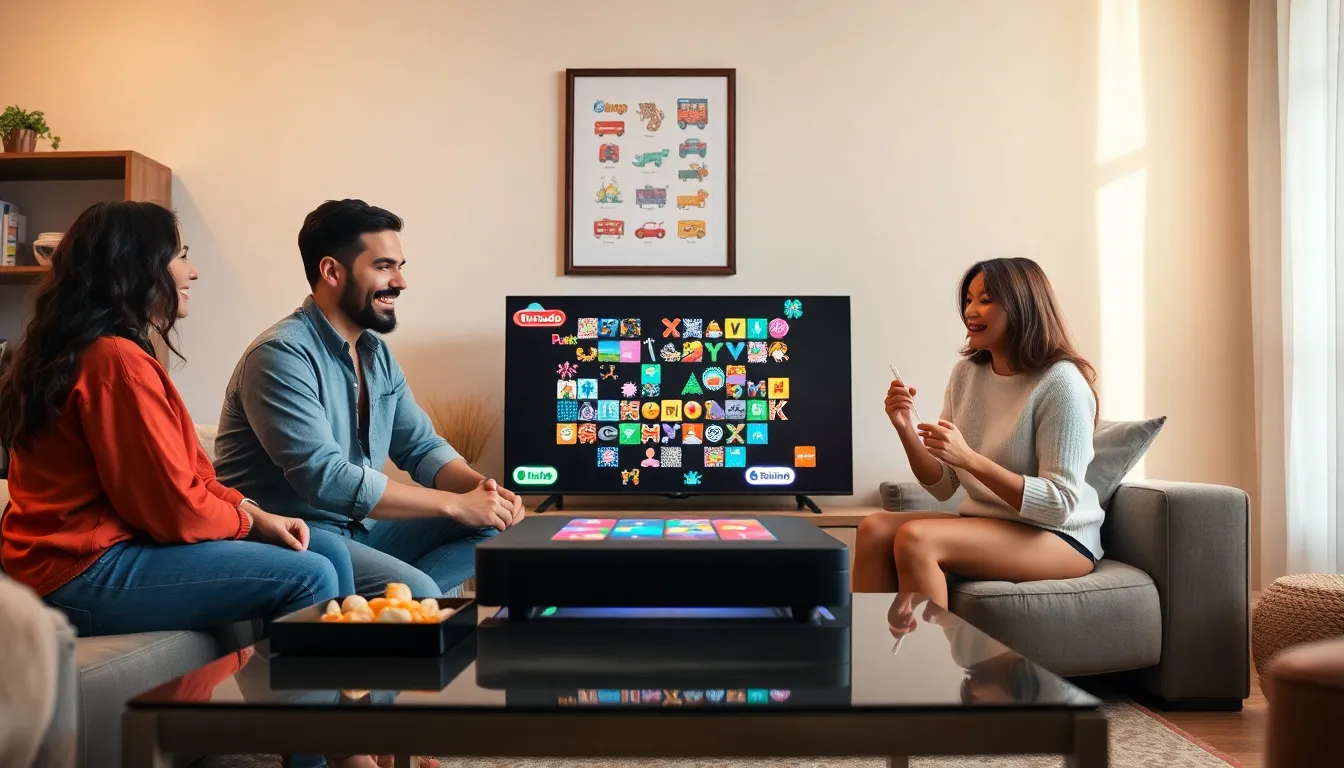Table of Contents
ToggleNintendo puzzle games have charmed players for decades, tickling those neurons while offering endless hours of immersive fun. Whether they’re stacking blocks, matching colors, or solving mind-bending mazes, these games have become a beloved staple in the gaming world. Ever wondered why players keep coming back to these challenges? It’s simple: they blend addictive gameplay with a hint of nostalgia and a sprinkle of innovation, creating an irresistible recipe for success. So, buckle up as we unravel the legacy, the icons, and the clever mechanics that make Nintendo puzzle games a delightful affair.
The Legacy of Nintendo Puzzle Games

Nintendo has a rich history when it comes to developing engaging puzzle games. It all started in the early 1980s, laying the groundwork for what would become a revered genre in gaming. With classics like “Dr. Mario” and “Tetris” catching fire, the world quickly recognized Nintendo as a powerhouse of inventive gameplay and creativity.
In the years that followed, titles like “Panel de Pon” and “Wario’s Woods” continued to shape the puzzle genre. These titles didn’t just entertain: they set a standard for creativity and design. The simplicity of the gameplay mechanics invited novice players while still challenging seasoned gamers. The evolution of these games showcases Nintendo’s commitment to quality and innovation, consistently proving that puzzle games are perennial favorites in the industry.
Nintendo didn’t just create games: they fostered a community of players who bonded over their shared love for problem-solving and strategy. This legacy still resonates today, emphasized in their latest releases that continue to attract new generations into the fold.
Popular Nintendo Puzzle Games Through the Years
The catalog of Nintendo puzzle games reads like a hall of fame, with a diverse array of titles each leaving a unique mark. Let’s explore some of the most influential games that have graced Nintendo consoles:
- Tetris: Often touted as the king of puzzle games, its blocks have become iconic. Released for the Game Boy in 1989, it not only defined mobile gaming but also captured the hearts of millions.
- Dr. Mario: This action-puzzle game introduced players to the charming world of Mario with a twist. Players found themselves matching colored capsules with germs in a fun and engaging manner.
- The Legend of Zelda: Link’s Awakening: Though primarily an adventure game, it integrated clever puzzles that challenged players and complemented the overall quest.
- Puyo Puyo and Super Puzzle Fighter II Turbo: These games, while originally not Nintendo titles, consistently appeared on Nintendo consoles, building a community around competitive puzzle-solving.
- Captain Toad: Treasure Tracker: This game brought a fresh twist to puzzle platforming, encouraging exploration and creative thinking.
Each of these titles left a profound impact, illustrating Nintendo’s ability not just to entertain but to innovate and inspire.
Innovative Gameplay Mechanics in Nintendo Puzzle Games
What sets Nintendo apart in the realm of puzzle games is their ingenious gameplay mechanics. By combining traditional puzzle elements with unique twists, they’re able to keep players engaged.
For instance, Dr. Mario is a prime example of blending a classic formula (match-three mechanics) with a medical theme. This approach not only elevates the game but adds an extra layer of strategy when players must consider the arrangement of capsules and viruses.
Similarly, in Captain Toad: Treasure Tracker, the game introduces spatial puzzles that require players to physically rotate the camera to explore environments. This innovative perspective transforms how players interact with the game world.
Also, the introduction of cooperative and competitive elements, seen in games like Tetris 99, redefines what it means to play a puzzle game, enabling energy and excitement in multiplayer settings. The continuous evolution of these mechanics keeps the genre fresh, engaging, and undeniably fun.
The Impact of Nintendo Puzzle Games on the Gaming Industry
Nintendo’s influence extends beyond its own titles, significantly impacting the entire gaming industry. By prioritizing player experience, the company has set benchmarks that other developers aspire to reach.
Consider how Nintendo’s approach to gameplay design fosters inclusivity. Many of their puzzle games feature straightforward mechanics, allowing players of all ages to jump in without extensive prior experience. This accessibility has contributed to the genre’s widespread appeal.
Another critical aspect is the emphasis on competition. Tetris 99 exemplifies this trend, showcasing how an old classic can be revitalized within a modern context. Competitive puzzle games have grown in popularity, inspiring esports and competitive gaming culture.
Besides, the integration of storytelling in puzzle games offers players deeper narratives, adding layers of engagement that were rarely seen in earlier puzzle offerings. This strategy has paved the way for future titles that look to intertwine puzzle-solving with compelling storytelling.
Why Nintendo Puzzle Games Remain Popular Today
The enduring popularity of Nintendo puzzle games can be attributed to several factors. First, nostalgia plays a significant role. Many players grew up with these titles, sparking a sense of fondness that brings them back time and again. Each playthrough often evokes memories of childhood and carefree days spent solving puzzles.
Secondly, the accessibility of these games makes them prime candidates for casual play. Players can immerse for quick rounds without committing extensive time, making them perfect for both short gaming sessions and long gaming marathons.
Also, the continuous updates and new releases ensure these classic formulas remain relevant. Nintendo’s ability to adapt gameplay elements while incorporating modern trends keeps their puzzle games fresh and intriguing. They not only capture the attention of veterans but also enthrall newcomers.
Finally, the social aspect cannot be overlooked. Many of these games encourage multiplayer experiences, whether through cooperative gameplay or competitive battles. This social interaction enhances the fun and fosters community, further solidifying their appeal.







